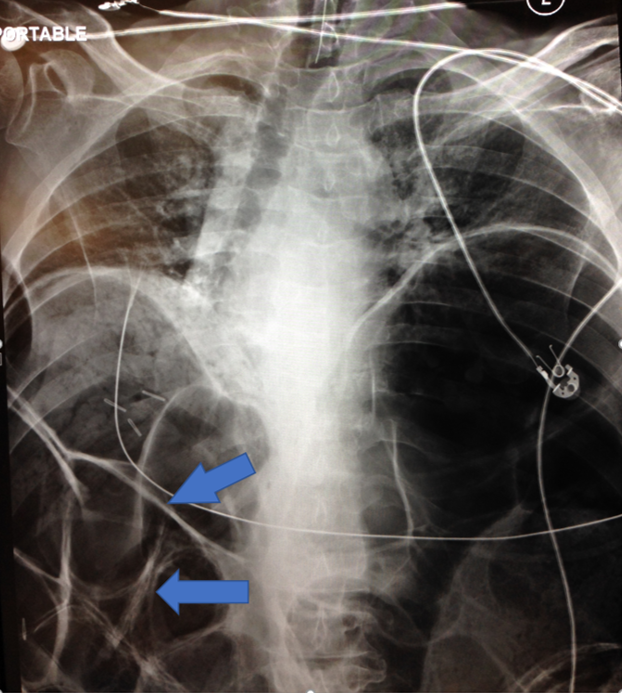[3]
Gans SL, Stoker J, Boermeester MA. Plain abdominal radiography in acute abdominal pain; past, present, and future. International journal of general medicine. 2012:5():525-33. doi: 10.2147/IJGM.S17410. Epub 2012 Jun 13
[PubMed PMID: 22807640]
[4]
Stapakis JC,Thickman D, Diagnosis of pneumoperitoneum: abdominal CT vs. upright chest film. Journal of computer assisted tomography. 1992 Sep-Oct;
[PubMed PMID: 1522261]
[5]
Roh JJ, Thompson JS, Harned RK, Hodgson PE. Value of pneumoperitoneum in the diagnosis of visceral perforation. American journal of surgery. 1983 Dec:146(6):830-3
[PubMed PMID: 6650772]
[6]
Winek TG, Mosely HS, Grout G, Luallin D. Pneumoperitoneum and its association with ruptured abdominal viscus. Archives of surgery (Chicago, Ill. : 1960). 1988 Jun:123(6):709-12
[PubMed PMID: 3285808]
[7]
Bansal J, Jenaw RK, Rao J, Kankaria J, Agrawal NN. Effectiveness of plain radiography in diagnosing hollow viscus perforation: study of 1,723 patients of perforation peritonitis. Emergency radiology. 2012 Apr:19(2):115-9. doi: 10.1007/s10140-011-1007-y. Epub 2011 Dec 6
[PubMed PMID: 22143167]
[8]
Catalano O, [Computed tomography in the study of gastrointestinal perforation]. La Radiologia medica. 1996 Mar;
[PubMed PMID: 8628938]
[9]
Laméris W, van Randen A, van Es HW, van Heesewijk JP, van Ramshorst B, Bouma WH, ten Hove W, van Leeuwen MS, van Keulen EM, Dijkgraaf MG, Bossuyt PM, Boermeester MA, Stoker J, OPTIMA study group. Imaging strategies for detection of urgent conditions in patients with acute abdominal pain: diagnostic accuracy study. BMJ (Clinical research ed.). 2009 Jun 26:338():b2431. doi: 10.1136/bmj.b2431. Epub 2009 Jun 26
[PubMed PMID: 19561056]
[10]
Gans SL, Pols MA, Stoker J, Boermeester MA, expert steering group. Guideline for the diagnostic pathway in patients with acute abdominal pain. Digestive surgery. 2015:32(1):23-31. doi: 10.1159/000371583. Epub 2015 Jan 28
[PubMed PMID: 25659265]
[11]
Levine MS, Scheiner JD, Rubesin SE, Laufer I, Herlinger H. Diagnosis of pneumoperitoneum on supine abdominal radiographs. AJR. American journal of roentgenology. 1991 Apr:156(4):731-5
[PubMed PMID: 2003436]
[12]
de Lacey G, Bloomberg T, Wignall BK. Pneumoperitoneum: the misleading double wall sign. Clinical radiology. 1977 Jul:28(4):445-8
[PubMed PMID: 872511]

